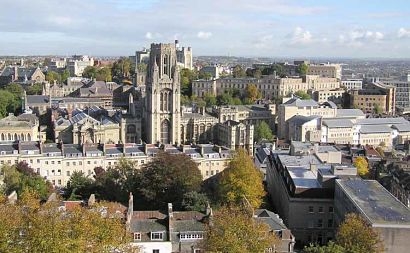
Cities consume about 75 percent of the world’s primary energy and contribute around 60 percent of global greenhouse gas emissions. Until recently, many cities didn’t regard energy policy as part of their statutory powers. However, cities are now becoming significant players in the energy markets and are actively accelerating the shift to a cleaner, more efficient and decarbonised energy supply in order to address increasingly urgent community concerns.
The “Energy Transition Framework for Cities” report, published by certification body DNV GL, highlights how utilities, energy producers and other companies can help cities achieve their climate and energy goals. It finds that while megacities attract the headlines, mid-size cities are also attracting attention for significant innovation and leadership. These mid-size cities are more numerous and comprise a greater portion of the world's population in aggregate.
The report identifies best practices, in ten of the most forward-looking and pioneering cites across the globe, that can be used by other cities to achieve sustainability and economic development goals. It also identifies opportunities to accelerate the energy transition.
“At DNV GL, our vision for a safe and sustainable future requires a broader view across multiple dimensions of the energy transition” said Richard Barnes, Executive Vice President and Regional Manager, Energy North America at DNV GL. “Driven by inconsistent international leadership and enabled by changes in technology, energy markets and regulation, cities have emerged as significant players in the energy transition. But there are some challenges they cannot face alone. As our report highlights, utilities, energy providers and other companies have a big opportunity to step up and help cities meet these challenges. Together, we can enhance the lives of millions by creating more liveable and sustainable cities”.
Lead author Betty Seto, head of DNV GL’s Sustainable Buildings and Communities Department, added that there is no single correct path to a decarbonised energy future for cities. However, some cities have been driven by their citizens, while others have implemented top-down initiatives. Bristol, in the UK, is an example where the vision of the Mayor fed down to the whole community. DNV GL believes that drawing on the commonalities across leading cities can help provide a roadmap for other cities who want to embark on the energy transition journey.
The Energy Transition Framework for Cities is compiled with input from over 20 experts from across DNV GL based on decades of experience in sustainable buildings and communities. In the United States alone, DNV GL has more than 350 experts and data analysts specialising in climate planning, energy efficiency and energy management, sustainable buildings and vibrant communities. Through its programmes the company has supported hundreds of cities and their energy partners across the world.
For additional information:

